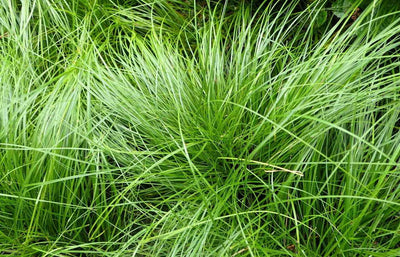Winter Garden Prep: The Smart Gardener’s Guide to Planting and Protecting for Spring
As the beauty of the Fall season fades and the first frost glimmers on fallen leaves, most gardeners tuck away their gloves and call it a season. But those who understand nature’s rhythm know this quiet period is the perfect time to prepare for spring.
Winter isn’t an end—it’s a pause filled with opportunity. Soil rejuvenates, roots strengthen, and with the proper planning, your garden will awaken stronger, healthier, and more vibrant come spring.
Clean, Prune, and Protect What You Have
Begin by walking through your garden to find any dead or diseased plants. Trim back perennials, such as daylilies, hostas, and coneflowers, to prevent pests and diseases from remaining in old stems during winter. Clear away damp, fallen leaves to reduce the chance of rot or fungus.
For shrubs and trees, cut away damaged or crossing branches before strong winter winds arrive. Lightly shape evergreens, such as American Arborvitae and American Holly, to help them withstand snow. Wait to prune spring-blooming shrubs, such as lilacs, until after they have flowered.
Feed the Soil Before It Rests
A healthy garden begins with healthy soil, and winter is an ideal time to provide it with extra nutrients. After cleaning your beds, spread compost or well-aged manure over them. As winter moisture soaks in, these nutrients will slowly improve the soil.
If your garden beds are empty, consider planting a winter crop, such as rye or clover. These plants help prevent erosion and add organic matter. When you turn them into the soil in early spring, they naturally improve soil structure and fertility.
Mulching: Nature’s Winter Blanket
Adding mulch in late fall to protect your plants. Spread a 2 to 3 inch layer of shredded leaves, pine needles, straw, or bark. This helps maintain a steady soil temperature, prevents soil from shifting during freeze-thaw cycles, and retains essential moisture in the ground.
For woody plants such as perennials and ferns, keep mulch a little away from the base to prevent rot. Perennials like Swamp Milkweed and Arkansas Blue Star benefit from this extra insulation, as their roots continue to grow beneath the surface. Wait until the ground has cooled before adding mulch to avoid early sprouting during Tennessee’s mild winters
Winter is a Great Planting Season, too
Winter gives you one more chance to plant trees, shrubs, and bulbs before the ground freezes. Plants like River Birch Trees, Oakleaf Hydrangea, and Winterberry develop strong roots in the cooler months, as they are not using energy for leaves or flowers. Energy isn’t spent on top growth.
This is also the perfect time to plant bulbs, such as daffodils, crocuses, and tulips. They do best when planted before the ground freezes and will provide a burst of color when spring arrives.
Water Wisely
Even when plants are dormant, they still need water. Before the first hard freeze, give all your trees, shrubs, and perennials a deep watering, or a deep soak.
After the soil freezes, water cannot reach the roots. On mild winter days, check the ground. If it is dry a few inches below the surface, water slowly.
Evergreen trees and conifers, such as American Holly and Arborvitae, lose moisture through their leaves even in winter. Keeping them watered helps prevent browning and stress in the spring.
Don’t forget to take care of your tools as carefully as your plants
Clean soil off shovels and pruners, then oil the metal parts to stop rust. Drain hoses and keep them indoors. Turn clay pots upside down or bring them inside to keep them from cracking or rusting.
If you have irrigation systems, turn off the water lines to prevent them from bursting. This is also a good time to inspect raised beds, trellises, or fences and make any necessary repairs while the plants are not growing much.
Plan for Next Season
Winter gardening is not just about preserving your garden; it is also about getting ready for next year. Use this quiet time to reflect on what worked well and what could be improved. Draw a plan for next year and note which spots need more sunlight, pollinator plants, or erosion control.
The Beauty of the Dormant Season
Even during the cold, quiet season, your garden is still alive. Birds eat the seeds from Switchgrass, and the red berries of Winterberry Shrubs stand out against bare branches. Underground, roots remain active and store nutrients for spring.
At TN Nursery, we remind gardeners that caring for your garden in winter is an investment in spring’s beauty. Getting ready now means less work later and healthier plants that come to life when the days get longer.
Final Thoughts
Winter gardening takes planning, patience, and care. Clean up finished plants, feed what is still growing, protect what is resting, and plant what is ready. If you care for your garden in winter, spring will reward you with full blooms. Whether you are mulching your Hydrangeas, planting River Birch Trees, or watching Switchgrass move in the breeze, remember that every bit of effort now helps your garden thrive and stay colorful when the seasons change again.














